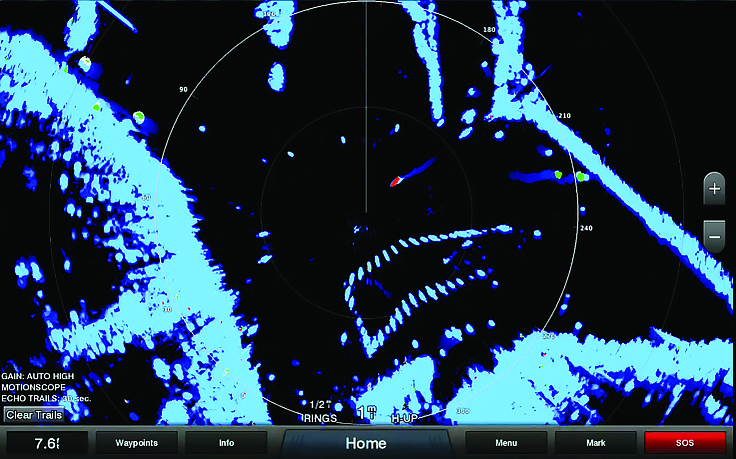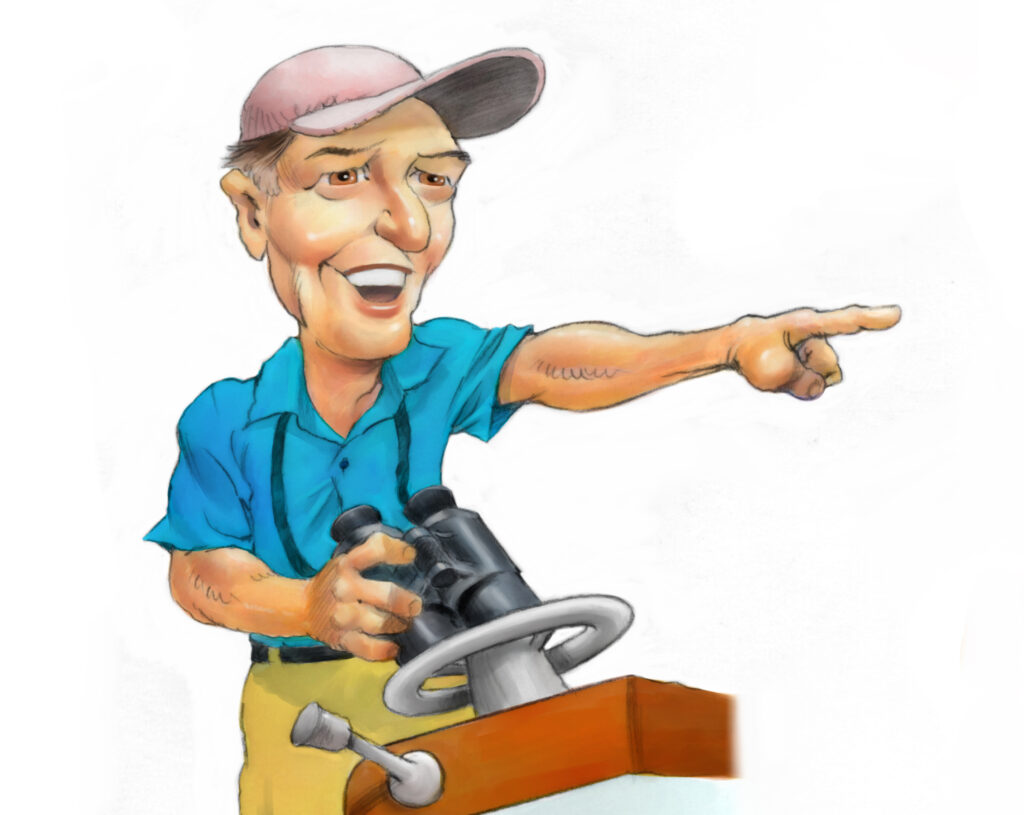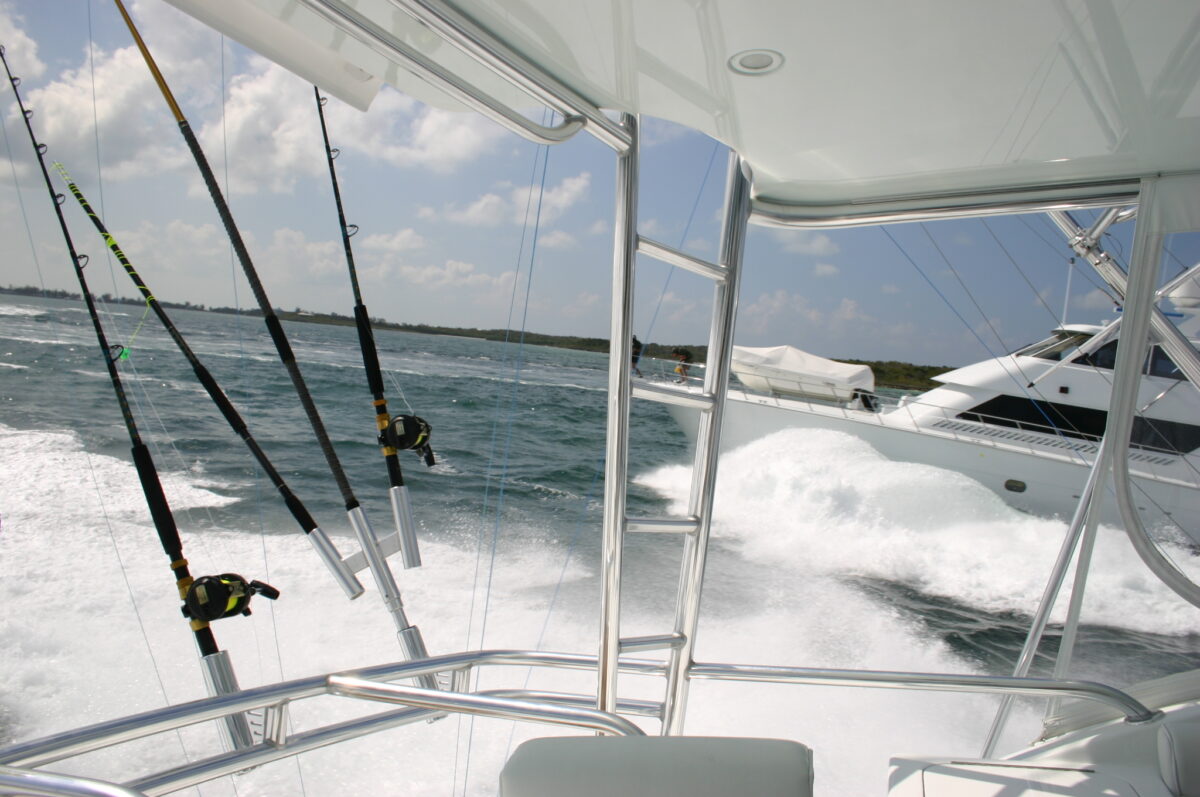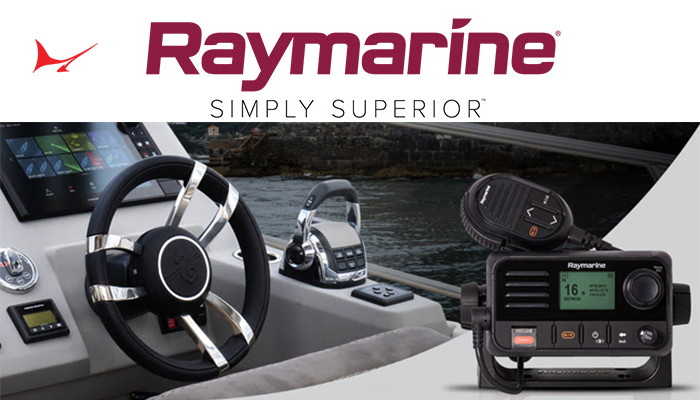Table of Contents
Modern Touches
Recently I visited a 68 sportfish. The vessel had received many helm upgrades. The control station was a beautiful helm with four large flush-mounted glass style monitors. Upon powering on the system, I witnessed a modern GPS chart plotter in high definition. In contrast, I also found a blurry radar image from a system introduced over 10-years ago that had been adapted (not well) to work with the new screens. I doubted finding birds with radar on this boat.
The Clash of Old and New Technology
Since it appeared that cost was not an issue, I asked how this happened. The captain explained that the previous captain was familiar with the old radar and knew how to use it. He therefore demanded it remain during the electronics upgrade. It seems the prior captain didn’t want to learn a new radar system! There are many captains and owners who prefer to keep using the hardware they know. That said, the advantages to using modern electronics are worth the effort to take the time to learn!

The Fundamental Uses of Marine Radar
Lets review why we use marine radar:
Enhancing Navigational Safety Through Radar Technology
Collision avoidance is the number one feature of marine radar. An educated radar user can use the displayed radar image to avoid a collision with land, other fixed objects and other vessels at sea. This use of radar is not just for nighttime use, it can be used anytime and can help locate and identify targets.
Meeting Regulatory Standards and Ensuring Passenger Safety
Regulatory compliance. The international COLREGS and the USCG Navigation rules (small white book) both require the use of all available means –including radar if equipped– to determine if a risk of collision exists.
Radar can be used for passenger safety to help identify threats or uninvited vessels approaching or traveling nearby.
Radar can be used to locate distant storms and help provide the captain with information necessary to safely navigate through or around a storm.
Radar can help measure distances to other objects such as land masses, aids to navigation, other ships, and storms. Radar can also confirm the ship location against a chart plotter display.
Ship radar can signal a radar beacon (racon). When triggered, a racon transmits information back to the ship radar display about the racon feature. Often this information can be used as a navigation aid to identify a landmark or buoy.
Radar can activate SART (Search And Rescue Transponder). SART devices are used to locate a survival craft or distressed vessel by displaying a series of dots on a rescuing ship’s radar display.
Most importantly for ITB readers, RADAR CAN FIND BIRDS!! (We are looking for birds since birds may congregate near the same baitfish that are part of the gamefish diet.)
A Radar Overview
Before we get into the fun stuff on finding birds with radar, let review ARPA and MARPA, echo trails, VRM and EBL, magnetrons and solid state radar.
ARPA–automatic radar plotting aid– is a feature of commercial radar systems where the radar system automatically acquires and tracks targets (other boats) near the vessel to aid in collision avoidance. The ARPA system reports the other vessel range, bearing, target speed, target direction (course), CPA (closest point of approach), and TCPA (time of closest point of approach), safe or dangerous indication, and often includes a proximity alarm. Larger boats and commercial ships are required by IMO (International Maritime Organization) and other standards to have and use the ARPA feature on their radar. While the ARPA feature is found on commercial radars, Furuno offers it on many of its recreational radar packages as well.
MARPA— Mini Automatic Radar Plotting Aid”is very similar to ARPA but includes fewer features. MARPA is currently found on most of the recreational radars. The major difference is that with MARPA, targets need to be manually selected and often a smaller number of targets can be tracked simultaneously. Note, for MARPA (or ARPA) to function accurately, a heading sensor is required. On a pleasure boat, often the heading sensor from an existing autopilot may be integrated. If not, a stand-alone heading sensor may be required.
The ARPA/MARPA feature is often underused by pleasure boaters. It is a great feature to use to enhance your situational awareness, especially when traveling or operating in any kind of restricted visibility. If not familiar with this feature, try it out on a clear day when you have time to experiment at the helm. Learn how to set your system up to acquire targets and see how the system alarms you when a target gets too close.
Echo trails
Echo trails are a safety feature which provide colored historical trails behind a target vessel. These trails are shown on the screen in a different color to help you quickly and easily identify moving targets and potential collision threats. The trails provide a visual depiction of the vessel course.
VRM and EBL
Variable range markers (VRM) and electronic bearing lines (EBL) allow you to move the radar display cursor over a vessel or point of interest to view the instantaneous measurement of distance and bearing to vessels or land.

Magnetrons
We all hear about the magnetron inside the traditional marine radar but what does it do and why worry about transmits hours? A magnetron generates the radio pulses (radar energy) that are sent out from the marine radar antenna. After thousands of hours, the magnetron performance can be diminished. It is usually a slow degradation, starting with symptoms of reduced ability to acquire distant targets. If this happens, the radar magnetron can be replaced to restore the radar original performance. The design and technology behind the magnetron radar dates back to the 1940s military use. It wasnt until the 1980s that radar became affordable for pleasure boats.

The Evolution of Radar: From Magnetrons to Solid State
Recently, a new radar design has been made available to pleasure boats. Known as Solid State, Doppler, CHIRP or FMCW radar these new radars do not operate with magnetrons. Each of the major manufactures has their own name for the solid state technology radar”names include the Furuno NXT, Garmin Fathom, Navico Halo and Navico broadband 3G/4G and Raymarine Quantum. Most manufacturers offer this technology in both open array and dome styles.
The new solid state radar systems offer some advantages. These include:
- From a maintenance and service issue there is no magnetron to replace and no performance decrease as the radar operational hour increase.
- Great short range performance – some of these systems can show fine details such as finger piers inside a busy marina while 20 feet away.
- The radar is instant on, no warm up time before transmission.
- Low RF (radio frequency) emissions, safer for humans in the transmission beam.
- Solid state radar systems can indicate whether a target is moving toward or away your vessel using Doppler with programs such as Furuno Target Analyzer” and Garmin MotionScope.
There are also a number of drawbacks to the new system. These include:
- Long range performance may not be as good as with a magnetron.
- Solid State systems are not as good at finding and tracking birds as magnetron style radar.
The continuous development of solid state hardware and software should eventually allow these modern radars to exceed all performance aspects of magnetron radars for pleasure boat use.

The Art of Finding Birds with Radar
Using your radar to find birds is very useful when fishing. Long time captains can tell you they can easily manually tune their radars to find birds. Some newer radar users rely on the automated settings, often called bird mode by the manufacturers. Whichever method you choose, finding birds requires the ability to increase the gain and reduce the clutter of the controls. For manual users, set your range to medium or long. Next, increase the gain until you flood the screen with blanket of small specs, then back off the gain just a bit. Leave the AC rain and AC sea clutter off. Flocks of birds will look like dense reoccurring noise and not a solid target. It is best to practice this when you can visually see the birds and compare what you see to what the radar shows. It can take some practice adjusting your range, gain and clutters to get a picture that defines the birds. Your radar power, antenna style, mounting location, screen resolution and other factors can influence the settings and ability of a specific set-up to effectively see birds at a useful range.If your radar has an automatic bird mode setting, it worth a try. This option is an easy way to get the settings quickly adjusted. According to the manufacturers, there is more to this feature than just a gain pre-set. There is also a software algorithm that works in the background to adjust the radar settings to best identify birds. The best type of radar to find distant birds is a large high power open array– a 25kW with a 6 array is the most typical radar found on tournament sportfish boats. Certainly less power and size will work, just not as good or as far. The narrow beam width of the open array and high transmission power is what allows the radar to pick up small fast-moving, distant targets such as birds.Some captains have been able to easily tune and use modern solid state radar to target birds, even using the new dome style radar on smaller boats. The radar height off of the water and the bird height off the water are limiting factors to the distance birds (or any object) can be marked.
The Integral Role of Radar in Modern Boating
Whether using your radar in the darkness of night to find your way or to locate birds on the horizon during a tournament, your boat radar is one of the most important pieces of equipment on the bridge. Everyone uses marine radar in different ways. Just as there are a variety of uses for radar, there are many different skill levels of radar users. What is universal, however, is that there are some important safety and fishing features of radar that all captains should know about. Take the time to learn your system and keep it in operating performance.
Don’t Forget to Check Out Our Sportfishing Job Board! Did You Know? It’s the perfect platform for seeking skilled captains and mates. Whether you’re on the hunt for your dream team or looking to join one, your next big adventure begins here. Explore the opportunities now! Click Here
Dive Deeper into the World of Sportfishing
You’ve just experienced a taste of the exceptional content featured in the pages of InTheBite Sportfishing Magazine. If you found this engaging, you’re in for a treat with our full publication. Whether you prefer the tactile experience of print or the convenience of digital or both we have a special offer for you.
Unlock Exclusive Savings: Enjoy 50% Off Your Subscription!
Are you ready to explore the thrilling world of sportfishing from the comfort of your home? Subscribe now and embark on a journey filled with captivating stories, expert insights, and insider tips. Choose between our digital or print edition and secure an incredible 50% discount on your subscription.
Subscribe today and get ready for an adventure like no other. Click here to subscribe and elevate your sportfishing experience with InTheBite Sportfishing Magazine.














